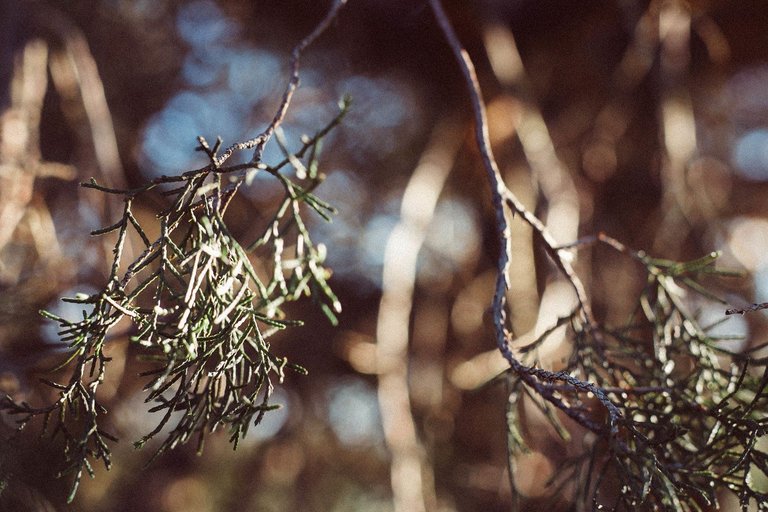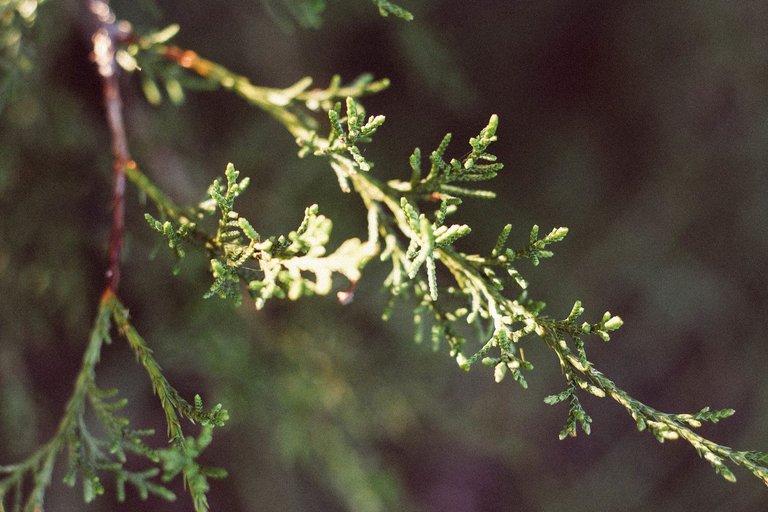Juniperus virginiana
Eastern Red Cedar
Eastern Juniper
Aromatic Red Cedar

Juniperus virginiana, or otherwise known by its common name Eastern Red Cedar is the familiar species of my upbringing. It is a fairly common tree of the Southeast U.S. (less so in the mountains), Midwest and Great Plains regions of the the U.S. where it can grow on a wide variety of soils. It is more abundant than 200 years ago. Like I mentioned earlier in the Juniper plant profile, this is partially because of fire suppression as this tree is highly susceptible to fire. It thrives when fire does not occur seemingly dominating the ecology of an area and sometimes overtaking other species, or preventing others from growing. This is one reason why culturally it is deemed a ‘weed tree’ in the U.S. deep South when it is actually a native species serving an ecological purpose and responding to the conditions at hand. This association with the tree being ‘weedy’ is also because it grows up as a pioneer species in disturbed agricultural fields that have been abandoned, seeming to ‘overtake’ attempts to cultivate and control fields for crops or livestock.
High rates of disturbed soil in its range and fire suppression have increased the amount of places it thrives. It can grow a long time, an unusual but not unheard of trait for a pioneer species. I have seen it in full deciduous and mixed deciduous forests, as well as in open fields. Though, the deepest of dark woods is not ideal for this species and it tends to die there. In the forest, it seems to have less lower branches and a different kind of growth pattern. Some say these are a different subspecies, but I am not certain. The trees that come up in fields have such low and dense branches that you can barely even see the tree’s trunk sometimes. Older trees can have pretty big and thick trunks. Some of these trees have growth rings that are darn close together, making them strong and durable for making fence posts (not to mention their rot-resistance) and ‘Cedar’ chests. They were historically used to build cabins and shelters. In winter, the trees are nursery for cold weather loving plants like Chickweed. In the summer, their evergreen branches also provide shade from the harsh sun.
Still, much to the chagrin of the early European colonizers, Eastern Red Cedar persisted. The tree is not having any problems reproducing or thriving. It isn’t as common in the Appalachian mountains where the conditions aren’t as ideal for it. I do remember that we had a few at Dancing Springs Farm where I lived for several years outside of Asheville, NC. They were only located on top of a knoll on the land with the driest and poorest soil, as the best soil has drifted down towards the river bottom, where we gardened. It has the potential to replace grasslands when fire isn’t allowed to come through.

To step back again in lens to the plant family of which Juniper species are a part, I wanted to make a few notes on some of Eastern Red Cedar’s Cypress family neighbors and kin.
Atlantic White Cedar, Chamaecyparis thyoides can be found from Maine to North Carolina and the Florida panhandle, sticking closer to the coast and in wet freshwater areas. Ironically, this tree’s populations are in decline due to fire suppression and is even rare in some areas of its traditional range. A friend, Dave, works for the Alligator River National Wildlife Refuge on the coast of North Carolina and monitors the populations of these trees (FYI, Red Wolves are also present there).
Another kin and neighbor of Juniperus virgiana is the aforementioned elegant Swamp/Bald Cypress that hugs wetter areas as well, Taxodium distichum. This is another beautiful and fascinating tree that used to grow in larger ancient forests. Some of the oldest trees that still exist of this species can be found in eastern North Carolina swamps. For some reason tourists like to buy the cut off Cypress ‘knees’ that stick out of muck and water.
Another regional kin is northern White Cedar, Thuja occidentalis which is found more to the north.
The Eastern Red Cedars that grow on the coast look at bit different. I’ve seen them on Cape Hatteras National Seashore along the Outer Banks of North Carolina intermingling with coastal Greenbriar (Smilax sp.), Muscadine (Vitis rotundifolia), Live Oaks (Quercus virginiana) and more. These Eastern Red Cedars are different enough that they are given subspecies status by some: Juniperus virginiana var. silicicola and often is called ‘Sand Cedar.’ They are beautiful and gnarled from wind and salt spray and resemble growth habits more like what is familiar of Juniper in the southwest. In the southeast there’s also low growing and uncommon Juniperus communis var. depressa (Spira) but Juniperus communis as you’ll see later in this write-up is found more to the north, though occasionally in the southwest.
Eastern Red Cedar berries are loved by birds, including Cedar Waxwings, American Robins, and European Starlings. One time on a plant walk with Luke Learningdeer, a teacher of mine over the years- he told a story from a sit spot where he watched birds start at the top of an Eastern Red Cedar and work their way down eating every berry. When it got dark, they flew away, leaving all of the lower branches still full. They came back the next day to finish eating the rest. Birds majorly replant Junipers and rely on them often for their winter food supply. Thinning Junipers is not necessarily a bad thing when you have a ton, it can actually be beneficial, but leaving some too really can help the birds out, or create needed windbreaks in fields.

to be continued with other species of Juniper as a focus, including Common Juniper which is found worldwide and is used in Gin making, and in the Sauna practices of northern folk in Scandinavia and Russia. I freaking love Juniper. I hope you do too.
Your vote and delegations will go a long way dear friend @ofsedgeandsalt
Et votum tuum suport meo vadam longa via amicus meus blog ☺
Thanks for sharing, it has been a very educative one for me. Nice post @ofsedgeandsalt .
Juniper? Now I know what it's name! There's a lot of that kind of trees here in UAE but in indoor. They need a good soil for Juniper, loam is better.
I bet those are Junipers. But, it could be Cypress trees or some other genus too. Here in the USA they do not need good soil, in fact they will grow on the poor soil places.
Wow! I really need to know more about this plants.